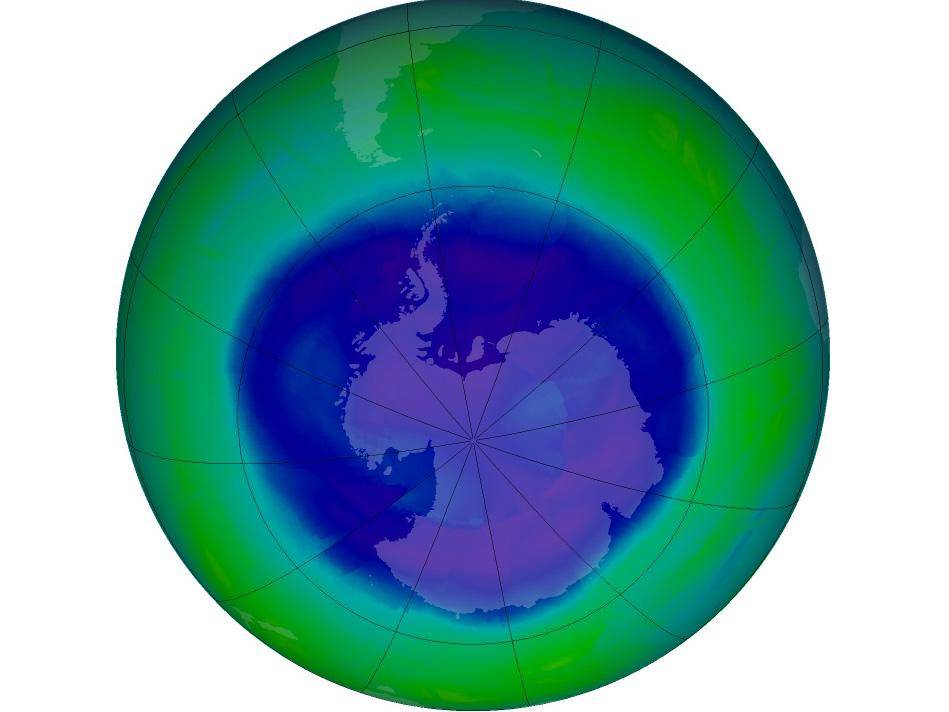
The Antarctic ozone hole reached its annual maximum on Sept. 12, 2008, stretching over 27 million square kilometers, or 10.5 million square miles. The area is calculated using data from the Ozone Monitoring Instrument on NASA's Aura satellite. This is considered a "moderately large" ozone hole, according to NASA atmospheric scientist, Paul Newman.
The Antarctic ozone hole reached its annual maximum on Sept. 12, 2008, stretching over 27 million square kilometers, or 10.5 million square miles. The area is calculated using data from the Ozone Monitoring Instrument on NASA’s Aura satellite. This is considered a “moderately large” ozone hole, according to NASA atmospheric scientist, Paul Newman. And while this year’s ozone hole is the fifth largest on record, the amount of ozone depleting substances have decreased about 3.8% from peak levels in 2000. The largest ozone hole ever recorded occurred in 2006, at a size of 10.6 million square miles. NASA has been monitoring the status of the ozone layer through satellite observations since the 1970s.
Image Credit: NASA




























